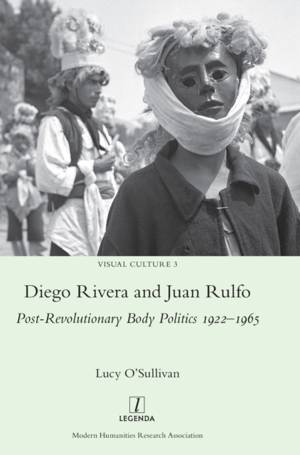
- Afhalen na 1 uur in een winkel met voorraad
- Gratis thuislevering in België vanaf € 30
- Ruim aanbod met 7 miljoen producten
- Afhalen na 1 uur in een winkel met voorraad
- Gratis thuislevering in België vanaf € 30
- Ruim aanbod met 7 miljoen producten
Omschrijving
Working in different media, Diego Rivera (1886-1957) and Juan Rulfo (1917-1986), are identified as monuments to two distinct moments in Mexico's cultural history, yet their works have never been examined comparatively. Reading their artistic corpora side-by-side reveals a shared preoccupation with the body that sheds light not only on its function as a critical political signifier in their works, but also on how the concepts of nation and revolution were conceived, articulated and contested in primarily corporeal terms in the decades following the Mexican Revolution (1910-1917). Drawing from a varied multimedia archive encompassing well-known and previously overlooked essays, murals, illustrations, photographs, films and literary texts, Lucy O'Sullivan engages in a close analysis of Rivera's and Rulfo's corporeal imagery to trace broader shifts in aesthetic and intellectual interpretations of post-revolutionary nationhood, from the euphoria of the 1920s to the phase of intellectual disenchantment beginning at mid-century.
Lucy O'Sullivan is a Lecturer in Hispanic Studies at the University of Birmingham.
Specificaties
Betrokkenen
- Auteur(s):
- Uitgeverij:
Inhoud
- Aantal bladzijden:
- 252
- Taal:
- Engels
- Reeks:
- Reeksnummer:
- nr. 3
Eigenschappen
- Productcode (EAN):
- 9781781888780
- Verschijningsdatum:
- 14/02/2022
- Uitvoering:
- Hardcover
- Formaat:
- Genaaid
- Afmetingen:
- 170 mm x 244 mm
- Gewicht:
- 603 g

Alleen bij Standaard Boekhandel
Beoordelingen
We publiceren alleen reviews die voldoen aan de voorwaarden voor reviews. Bekijk onze voorwaarden voor reviews.











